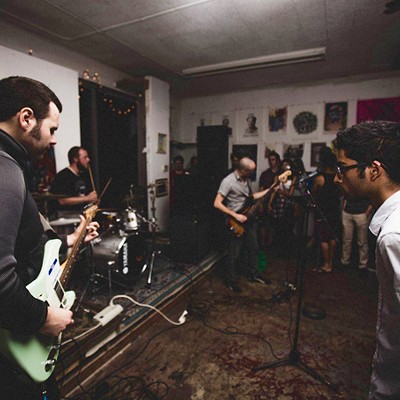ARGIN: auto 0in">"I'm dealing with the emotion of the sitter and trying to pull out their emotions, rather than dealing with the background," she said, adding that portraits are her favorite pieces.
"With a portrait, you can convey the human condition. You can feel the emotion of the sitter, and there is an instant connection," Scribner said. "I'm not saying you can't get that from a landscape, but it is more direct with a portrait and easier to understand with a specific expression on the face."
J.P. Morrison will also be showing works in "Seeing Other People," and she uses the background, symbols and animals as tools to communicate her impression of the sitter. Morrison said she works to blur the line between fine art and portraiture, using the accessibility of the portrait as an entry point to her other work.
"What portraiture can do that fine art doesn't is it relates to an audience that doesn't necessarily want to go to a museum and wouldn't understand why an artist arranged a pile of rocks in the middle of the room," Morrison said. "That can be alienating at times, so I think portraits are important and very vital."
TAXING FOR THE SITTER
Although some artists still insist their subject sit for them, she said it is taxing for the sitter, so she gets her inspiration from existing images. Morrison will sometimes take several photographs in a subject's private collection and use elements from each photograph to create the ideal portrait.
Scribner will take pictures herself and try to capture the perfect expression, which isn't always easy.
"The first couple pictures are usually beautiful, because there is a sense of them being freaked out, so there is a lot of emotion," Scribner said. "Then at the end, you start breaking down their wall. There are people who you would think would give good photographs, but they just won't let you in, so it's a challenge."
Another challenging element of a portrait, Morrison said, is that people are instinctually attuned to the subtleties of human expression. If an expression isn't quite right, it can be off-putting.
"It is all about the eyes, you can change things about the facial features, but if there is not life in the eyes, and I've had that happen when I didn't get the eyes right, then it just doesn't work," she said. "It can be disturbing if elements of the face don't look right. Sometimes it works; sometimes it doesn't when it is a more expressive portrait. I think it has to do with the mojo of the moment."
"?Charles Martin










